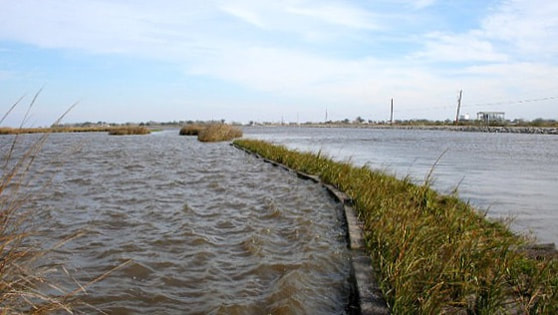Not known Details About Shore Protect Team
Table of ContentsGetting The Shore Protect Team To WorkThe Definitive Guide to Shore Protect TeamExcitement About Shore Protect TeamUnknown Facts About Shore Protect TeamFascination About Shore Protect TeamShore Protect Team - The FactsFacts About Shore Protect Team Uncovered
Decrease in residential or commercial property worth: As the area tourist is impacted by disintegration, so after that is the economic situation. Purchasers are much less most likely to search for a beach home that might be damaged anytime by the impending flooding and disintegration emergency situation. Subsequently, residential property value can drop exceptionally and influence the whole area.Whether a beach is simply small and jampacked or has to shut totally for the safety and security of the community and close-by properties, this significantly impacts tourism. Consequently, local economic climates are impacted (https://efdir.com/Shore-Protect-Team_360431.html). Danger of injury: The increased danger of flooding and structural failings causes an increased risk of injury to neighboring vacationers and community members

is home to greater than 84,240 miles of coast with 41% of it exposed to the open sea. Coastal designers supervise of protecting the coast against adjustments by reducing the harmful effects of both natural and manufactured occurrences. Shoreline stablizing is straight associated to their task. Beachfront hotels: Because shoreline disintegration effects tourism, it affects the success of waterside resorts.
The Best Strategy To Use For Shore Protect Team
Coastal commercial organizations: No tourists indicates no business. Coastal state parks: State parks that exist along coastlines are at risk of damage.
Soft stablizing is a much better remedy for the setting and even more lasting overall. Tough stablizing uses man-made frameworks as security to control erosion. Usually, these frameworks are mounted at appropriate angles or alongside quit sand movement and minimize the force of waves. The majority of forms of tough stablizing like seawalls and sheet steel are not excellent for coastline stabilization.
The Single Strategy To Use For Shore Protect Team
There's additionally insufficient evidence of their effectiveness depending upon the sort of shoreline and regional problems. Difficult stablizing methods often tend to be more challenging to install and don't match the natural aesthetic, standing out like an aching thumb and hurting neighborhood ecosystems in many circumstances. Coastline nourishment is the procedure of adding shed sand and debris back to beaches after erosion has actually happened.
TrapBags help in the process of beach nutrition by safeguarding all-natural communities and enabling plants to grow. While this procedure can be pricey and is not permanent, the pros often tend to surpass the disadvantages. TrapBag barriers deal several residential or commercial properties that make them ideal for seaside and shore erosion defense. They're: Eco-friendly: You can use indigenous dirt both to border and to fill the TrapBags.

Not known Incorrect Statements About Shore Protect Team
Easy to mount: Ease of installment suggests TrapBags can be released rapidly in the occasion of an emergency situation. They can also be mounted without any type of heavy equipment. Inexpensive: TrapBags are ideal for both small and large areas of coastline. They give a budget friendly solution to cover projects of any size.
The suitable seawall design relies on location-specific facets, including bordering erosion processes. There are 3 major kinds of seawalls: upright, bent, tipped, and piles (see table listed below).
All-natural barriers, such as coral reefs and mangrove woodlands, protect against the spread of tidal waves and the flow of coastal waters and mitigated the flood and rise of water. A cost-benefit approach is an effective method to determine whether a seawall is suitable and whether the advantages are worth the expense.
The Best Guide To Shore Protect Team
A seawall is a static function which can conflict with the dynamic nature of the coast and hamper the exchange of debris in between land and sea. Advantages and drawbacks of seawalls according to Short (1999) Benefits Drawbacks Long term option in comparison to soft coastline nourishment (https://coolors.co/u/shore_protect_team).

This can trigger beaches to dissipate, making them useless for beach goers. Normally, seawalls can be an effective means to manage seaside erosion, however only if they are built well and out of products that can stand up to the force of recurring wave power.
The Ultimate Guide To Shore Protect Team
The appropriate seawall layout counts on location-specific elements, consisting of bordering erosion procedures. There are three major kinds of seawalls: upright, rounded, tipped, and mounds (see table listed below). A report released by the United Nations Environment Program (UNEP) suggests that the tidal wave of 26 December 2004 created much less damage in the areas where natural obstacles were existing, such as mangroves, reef or seaside plants.
All-natural barriers, such as reef and mangrove forests, protect against the spread of tidal waves and the flow of coastal waters and mitigated the flooding and surge of water. A cost-benefit approach is an effective means to determine whether a seawall is suitable and whether the benefits are worth the expenditure.
The Definitive Guide for Shore Protect Team
A seawall is a static function which can contravene the dynamic nature of the shore and restrain the exchange of sediment between land and sea. The table below sums up some positive and unfavorable impacts of seawalls which can be made use of when comparing their performance with various other seaside management alternatives, such as coastline sustenance. [] Advantages and downsides of seawalls according to Short (1999) Advantages Disadvantages Lengthy term solution in contrast to soft beach nutrients. dock and bulkhead construction.

This can trigger coastlines to dissipate, rendering them ineffective for coastline goers. Generally, seawalls can be an effective method to manage coastal erosion, yet just if they are constructed well and out of products that can withstand the pressure of recurring wave power.